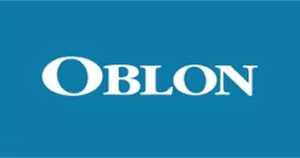- within Intellectual Property topic(s)
- with Inhouse Counsel
- with readers working within the Media & Information and Law Firm industries
On September 26, 2025, the Appeals Review Panel of the Patent Trial and Appeal Board ("PTAB") published a decision reviewing the PTAB's denial of rehearing in Ex parte Desjardins ("Review Decision").1 The Review Decision authored by new Director Squires is expected to send shockwaves through the PTO in regard to eligibility for Artificial Intelligence ("AI") and Machine Learning ("ML") applications. The Review Decision is available here.
The Review Panel was convened sua sponte on the Director's initiative under 37 CFR § 42.75(b) to review the PTAB's decision denying rehearing following appeal.2 Since Director review was implemented in the wake of the Supreme Court's 2021 decision in U.S. v. Arthrex, there has been only one other time a Review Panel has issued a decision under the Director's review authority for an ex parte appeal.3 That first case was Ex parte Chamberlain (also referred to in Federal Circuit proceedings as In re Xencor; "Chamberlain"), which was issued May 17, 2024.4 That case did not involve § 101.
This decision joins another Director Review decision issued earlier this year in Crusoe Energy Systems, LLC v. Upstream Data Inc. in shedding light on the PTO's approach to the eligibility of AI and ML applications under § 101.5 Unlike Desjardins, Crusoe originated from a Post Grant Review, not a PTAB Appeal. In addition, Crusoe was handled by a Delegated Rehearing Panel under §42.75(f), not an Appeals Review Panel that included the Director.6
The application in Desjardins relates to methods of training a machine learning model. The application was filed by DeepMind Technologies Ltd. ("DeepMind") on January 18, 2019, and has an earliest priority date of July 18, 2016. The application was examined in Art Unit 2128. Independent Claim 1 on appeal was considered representative and reads:
1. A computer-implemented method of training a machine learning model,
wherein the machine learning model has at least a plurality of parameters and has been trained on a first machine learning task using first training data to determine first values of the plurality of parameters of the machine learning model, and
wherein the method comprises:
determining, for each of the plurality of parameters, a respective measure of an importance of the parameter to the first machine learning task, comprising:
computing, based on the first values of the plurality of parameters determined by training the machine learning model on the first machine learning task, an approximation of a posterior distribution over possible values of the plurality of parameters,
assigning, using the approximation, a value to each of the plurality of parameters, the value being the respective measure of the importance of the parameter to the first machine learning task and approximating a probability that the first value of the parameter after the training on the first machine learning task is a correct value of the parameter given the first training data used to train the machine learning model on the first machine learning task;
obtaining second training data for training the machine learning model on a second, different machine learning task; and
training the machine learning model on the second machine learning task by training the machine learning model on the second training data to adjust the first values of the plurality of parameters to optimize performance of the machine learning model on the second machine learning task while protecting performance of the machine learning model on the first machine learning task,
wherein adjusting the first values of the plurality of parameters comprises adjusting the first values of the plurality of parameters to optimize an objective function that depends in part on a penalty term that is based on the determined measures of importance of the plurality of parameters to the first machine learning task.
The claims of this application were rejected under § 103 as obvious over a combination of at least five references, and DeepMind appealed these rejections to the PTAB.7 The PTAB not only upheld the rejections under § 103 but also issued a New Ground of Rejection using its authority under 37 C.F.R. § 41.50(b).8 The PTAB rejected some of the pending claims under § 101 as an ineligible abstract idea, stating the claims could be "broadly, but reasonably, interpreted as encompassing a mathematical algorithm computing mathematical calculations and manipulating particular information, i.e., values of certain parameters to train a machine learning model, similarly to the claims in Gottschalk v. Benson, 409 U.S. 63, 67 (1972)."9 Citing Enfish, LLC v. Microsoft Corp., the PTAB continued that the abstract idea was not integrated into a practical application, summarizing that "[t]here is no evidence in the record to establish that claims 1 and 18-19 recite a specific technological improvement to computers."10 The PTAB reasoned that:
The focus of Appellant's invention is not to improve the performance of computers or any underlying technology; instead, the focus of Appellant's invention is to train a machine learning model (algorithm) on multiple machine learning tasks in sequence, including "a first machine learning task using first training data" and "a second machine learning task using second training data." Spec. ¶¶ 2-3, 21, 27-29, 30-35. Any improvements embodied by the claims are merely improvements to this abstract idea.
. . .
Utilizing generic computer components (e.g., processors and memory) to train a machine learning model (algorithm) on multiple machine learning tasks in sequence does not alone transform an otherwise abstract idea into patent-eligible subject matter.11
In the subsequent Request for Rehearing, DeepMind argued that "the claimed subject matter provides technical improvements over conventional systems by addressing challenges in continual learning and model efficiency by reducing storage requirements and preserving task performance across sequential training".12
The Review Panel agreed, determining that "independent claim 1, when considered as a whole, integrates an abstract idea into a practical application."13 Critical to this decision was the Specification itself, which had had clear support for DeepMind's position. Paragraph 21 reads in part: "[t]his training strategy allows the model to preserve performance on earlier tasks even as it learns new ones, directly addressing the technical problem of 'catastrophic forgetting' in continual learning systems."14
The Review Panel identified three distinct improvements discussed in the specification that it found convincing. These included allowing the model to "effectively learn new tasks in succession whilst protecting knowledge about previous tasks," allowing the model to "us[e] less of their storage capacity," and enabling "reduced system complexity."15
Director Squires did not mince words when he characterized the PTAB's decision "[u]nder a charitable view" as using "overbroad reasoning" and "troubling, as it eschewed the clear teachings of Enfish, and instead substituted only a cursory analysis," but he did admit the original New Ground of Rejection was "perhaps understandable given the confusing nature of existing § 101 jurisprudence."16 The Review Panel instructed that "Examiners and panels should not evaluate claims at such a high level of generality." 17
This decision dovetails with the recent memo by Deputy Commissioner Kim on § 101 guidance issued in August, available here.18 The memo reminded examiners to "consult the specification to determine whether the disclosed invention improves technology or a technical field, and evaluate the claim to ensure it reflects the disclosed improvement."19
One portion of the Review Decision might signal a shift in the PTO's treatment of AI and ML applications. The Review Decision characterized the PTAB's approach as "essentially equat[ing] any machine learning with an unpatentable "algorithm" and the remaining additional elements as 'generic computer components.'"20 Director Squires stated that "[c]ategorically excluding AI innovations from patent protection in the United States jeopardizes America's leadership in this critical emerging technology."21
This decision, coupled with the recent memo, may signal a significantly warmer reception to AI and ML applications at the PTO.
It is critical that applicants be prepared to take advantage of this shift in treatment. One clear takeaway for applicants is to ensure that the specification clearly and thoroughly describes the advantages of the subject matter. Without critical Paragraph 21, this application may have met a different fate. These advantages should have a clear nexus with the features recited in the claims. We note that clear descriptions of the advantages can also be helpful in making "unexpected results" arguments to rebut obviousness rejections under § 103. Examples and comparisons with other systems or models may prove valuable in providing evidence for these advantages.
Another takeaway is to ensure that their representatives are equipped to not only understand the subject matter but also clearly explain it to an examiner who may have less legal and/or technical expertise. Appeals of § 101 rejections are notoriously difficult and a winning strategy may be to avoid going to appeal in the first place through careful drafting and prosecution.
Patent practitioners in all technological fields, but especially AI and ML inventions, should pay close attention to the decision (and the language) and be prepared to adapt to this new posture from the PTO.
Footnotes
1 Appeal 2024-000567, Application 16/319,040 (PTAB Apps. Rev. Sept. 26, 2025)
237 C.F.R. § 42.75(b): Sua sponte Director review. The Director, on the Director's own initiative, may initiate sua sponte Director Review of a decision as provided in paragraph (a) of this section. Absent exceptional circumstances, any sua sponte Director Review will be initiated within 21 days after the expiration of the period for filing a request for rehearing pursuant to § 42.71(d). See https://www.ecfr.gov/current/title-37/chapter-I/subchapter-A/part-42/subpart-A/subject-group-ECFRecc58a7b701aa12/section-42.75
3 U.S. v. Arthrex, 141 S. Ct. 1970 (2021).
4 Ex Parte Chamberlain, Appeal 2022-001944, Application 16/803,690 (PTAB Apps. Rev. May. 17, 2024) https://www.uspto.gov/sites/default/files/documents/2022001944_order_20240521.pdf
5 Crusoe Energy Systems, LLC v. Upstream Data Inc., PGR2023-00039 Patent 11,574,372 B2 (Delegated Reh'g Panel April 11, 2025)
6 37 C.F.R. § 42.75(f): Delegation. The Director may delegate their review of a decision provided in paragraph (a) of this section, subject to any conditions provided by the Director. See also 2024-22194 (89 FR 79744) https://www.federalregister.gov/documents/2024/10/01/2024-22194/rules-governing-director-review-of-patent-trial-and-appeal-board-decisions
7 Decision on Appeal. March 4, 2025
8 37 C.F.R. § 41.50(b). See https://www.ecfr.gov/current/title-37/chapter-I/subchapter-A/part-41/subpart-B/section-41.50
9 Decision on Appeal at 21.
10 Id. at 23, citing Enfish, LLC v. Microsoft Corp., 822 F.3d 1327, 1336 (Fed. Cir. 2016).
11 Id. at 23-24.
12 PTAB Apps. Rev at 7.
13 Id. at 10.
14 Id. at 7.
15 Id. at 8-9.
16 Id. at 9-10.
17 Id.
18 "Reminders on evaluating subject matter eligibility of claims under 35 U.S.C. 101," Deputy Commissioner Charles Kim, USPTO (August 4, 2025) (available at: https://www.uspto.gov/sites/default/files/documents/memo-101-20250804.pdf).
19 Id. at 4.
20 PTAB Apps. Rev at 9.
21 Id.
The content of this article is intended to provide a general guide to the subject matter. Specialist advice should be sought about your specific circumstances.


